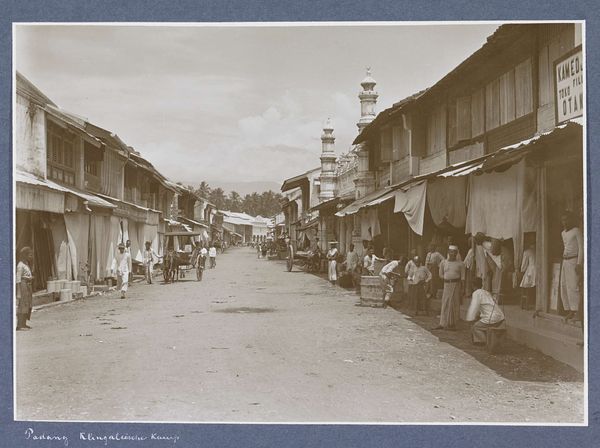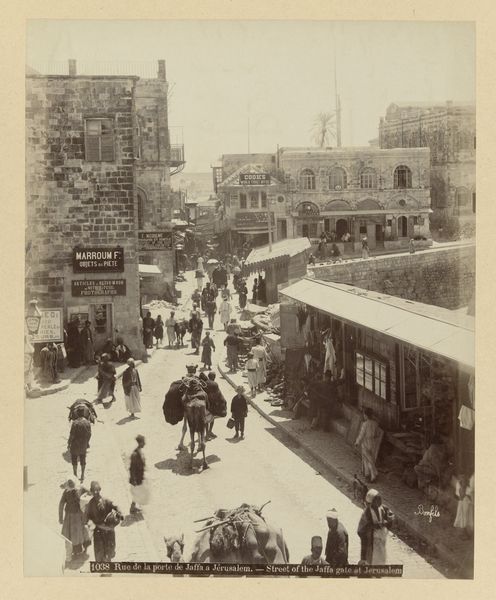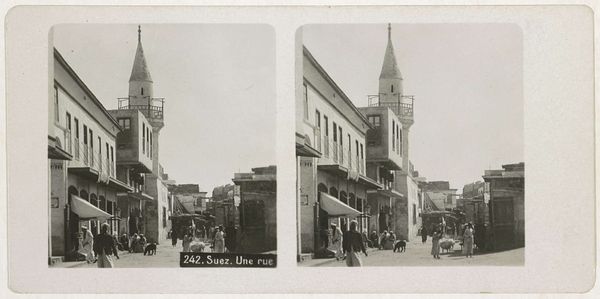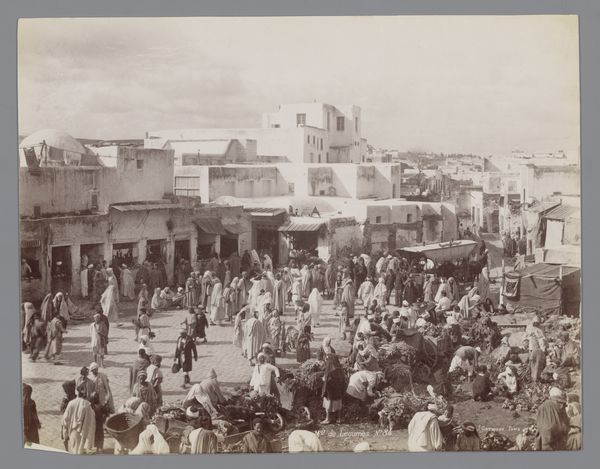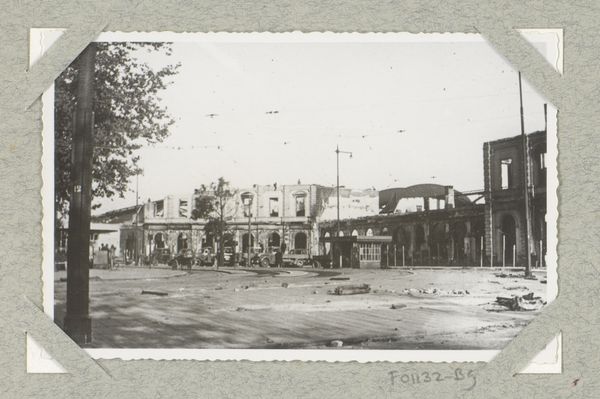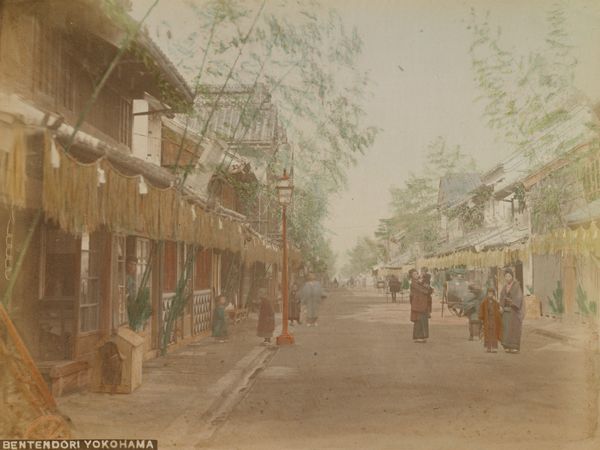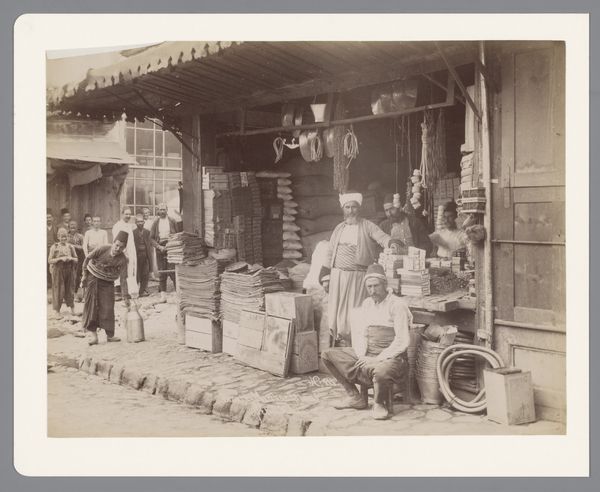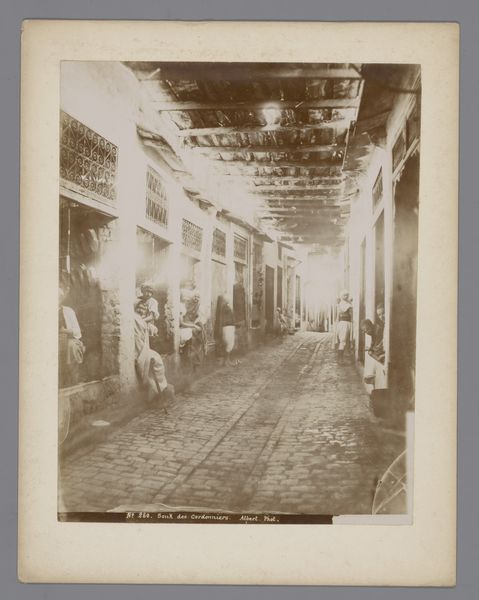
photography
#
portrait
#
street-photography
#
photography
#
orientalism
#
cityscape
Dimensions: height 83 mm, width 134 mm, height 90 mm, width 141 mm
Copyright: Rijks Museum: Open Domain
Curator: Looking at this photograph, “The Oriental Commercial Bureau,” taken around 1930, one is immediately struck by the sheer density of visual information. The layering of signs and figures almost creates a palpable sense of bustling urban life. What is your initial take, from a more historical vantage? Editor: That's true, there's almost a claustrophobic feel. What leaps out to me is the obvious influence of global commercialism even then. See the prominent Kodak signs? It's fascinating how photographic technology intersects with perceptions of the ‘Orient,’ solidifying cultural narratives that were circulated to a Western audience. Curator: Precisely. The "Kodak" signs are almost like cultural anchors. Consider how photography, still somewhat novel at the time, acted as both a tool for documenting and, in a way, constructing ideas about otherness. The camera itself becomes part of the visual symbolism here, signifying a Western gaze. Editor: Absolutely, it brings up the history of orientalism—how the West has historically represented the East. Photography played a key role in these visual constructs, allowing people who never left home to feel they were seeing “the real” Egypt, shaping public understanding—and misunderstanding—of non-Western cultures. Also interesting is how indigenous inhabitants, here, also interacted with these commodities and globalized practices, as also suggested by the signs in other languages. Curator: That’s a wonderful point about multi-directional agency. This photo speaks to the blending, even collision, of cultures and desires. These signs, especially alongside what appear to be local merchants and residents, signal both allure and anxiety. Editor: Yes, it's not just about Western dominance. Local populations are visibly appropriating aspects of this modernity. One wonders about the economics: who owns these Kodak franchises? How does global marketing affect local businesses and consumption habits? Curator: The anonymous photographer leaves much open for interpretation. Are they consciously participating in a colonial project, or merely documenting what they see? That ambiguity enhances the image's psychological weight, almost forcing us to confront our own biases. Editor: A photograph such as this one asks viewers to challenge easy assumptions about history, to look deeper at the complexities of intercultural exchange and how power dynamics can subtly play out on something as mundane as a busy street. Curator: Ultimately, it reminds us of the powerful role imagery plays in the construction and perpetuation of cultural understanding, or misunderstanding, shaping our world even today.
Comments
No comments
Be the first to comment and join the conversation on the ultimate creative platform.
